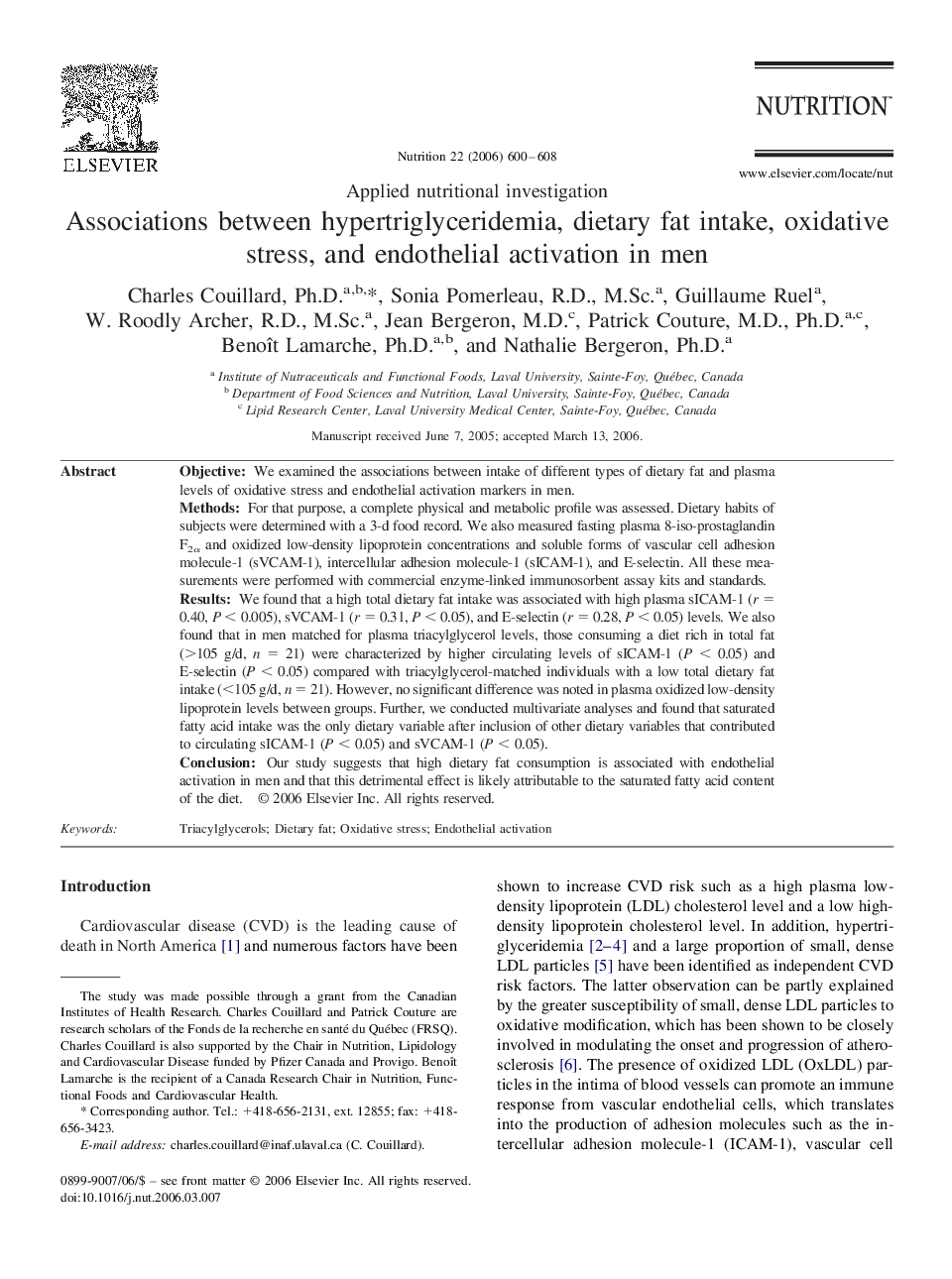| Article ID | Journal | Published Year | Pages | File Type |
|---|---|---|---|---|
| 3277822 | Nutrition | 2006 | 9 Pages |
ObjectiveWe examined the associations between intake of different types of dietary fat and plasma levels of oxidative stress and endothelial activation markers in men.MethodsFor that purpose, a complete physical and metabolic profile was assessed. Dietary habits of subjects were determined with a 3-d food record. We also measured fasting plasma 8-iso-prostaglandin F2α and oxidized low-density lipoprotein concentrations and soluble forms of vascular cell adhesion molecule-1 (sVCAM-1), intercellular adhesion molecule-1 (sICAM-1), and E-selectin. All these measurements were performed with commercial enzyme-linked immunosorbent assay kits and standards.ResultsWe found that a high total dietary fat intake was associated with high plasma sICAM-1 (r = 0.40, P < 0.005), sVCAM-1 (r = 0.31, P < 0.05), and E-selectin (r = 0.28, P < 0.05) levels. We also found that in men matched for plasma triacylglycerol levels, those consuming a diet rich in total fat (>105 g/d, n = 21) were characterized by higher circulating levels of sICAM-1 (P < 0.05) and E-selectin (P < 0.05) compared with triacylglycerol-matched individuals with a low total dietary fat intake (<105 g/d, n = 21). However, no significant difference was noted in plasma oxidized low-density lipoprotein levels between groups. Further, we conducted multivariate analyses and found that saturated fatty acid intake was the only dietary variable after inclusion of other dietary variables that contributed to circulating sICAM-1 (P < 0.05) and sVCAM-1 (P < 0.05).ConclusionOur study suggests that high dietary fat consumption is associated with endothelial activation in men and that this detrimental effect is likely attributable to the saturated fatty acid content of the diet.
